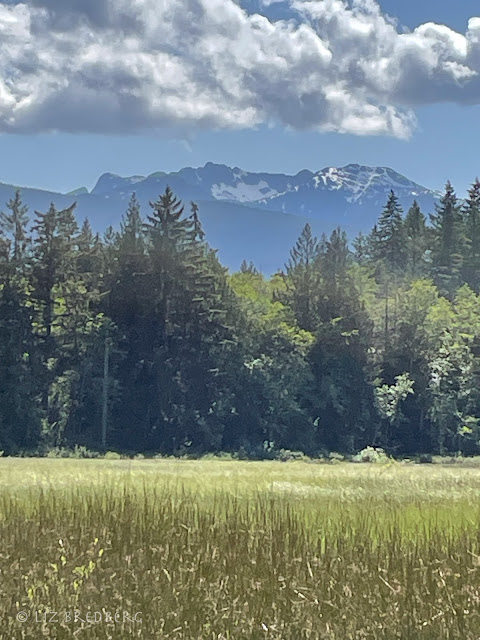29 May
A visit to the forest and wetlands on a warm Sunday afternoon. Summer is making its way into the forest and marsh, with mature foliage and bloom.
Unfortunately, the snowpack on Mount Arrowsmith looks much like it should in July.
Salal, which was only just starting to show new growth last week, is now showing the beginning of fruit.
At least one bear is awake and searching for grubs in fallen logs.
Last week I wrote about "mysterious tracks." Here they were again, but with the evidence of the bear's search for his brunch, their origin was more clear.
Other evidence of a search for food:
There are many trees in the forest that have been similarly drilled. To judge by the size of these holes, this is likely to be the work of a pileated woodpecker searching for insects in the dead tree. Their nest holes are much bigger, but this is evidence of a very busy bird.
The activity of this bumble bee was less evident than those of the bear and the bird.
It is identified on iNaturalist as an orange-rumped bumble bee.
A smaller creature made its presence known on the vanilla leaf.
This looks to be the work of a leaf miner. (I'm not certain which one.) Close observation shows the history of the creature, starting as an egg at the upper right of the leaf, hatching and munching (mining?) its way along the leaf. And growing, as can be seen by the widening track.
One of two native wild roses, the baldhip rose, was in bloom.
This appears to be the less common of the two species in this area. The Nootka Rose has straight, spaced and vicious thorns. The baldhip rose has the almost fuzzy looking thorns, sharp, but not in the same league as the Nootka. Both roses can be recognised by their thorns even in winter when they are bare of leaves.
A hairy woodpecker was busily working her way along a Douglas fir.
The marsh is splendidly lush and the forest beyond a wonderful mix of conifer and alder.
There were fewer dragonflies than last week, perhaps because of the later time of day. That said, I'm beginning to get the knack of photographing them, and think I can identify a few. (Suggestions, comments, most welcome!)
It seemed to feel happy on the base of this trekking pole.
The marsh cinquefoil is the only aquatic cinquefoil in British Columbia. Its flowers smell somewhat rotten, and attract flies and other insects. The do, however, look rather striking.



















Comments
Post a Comment